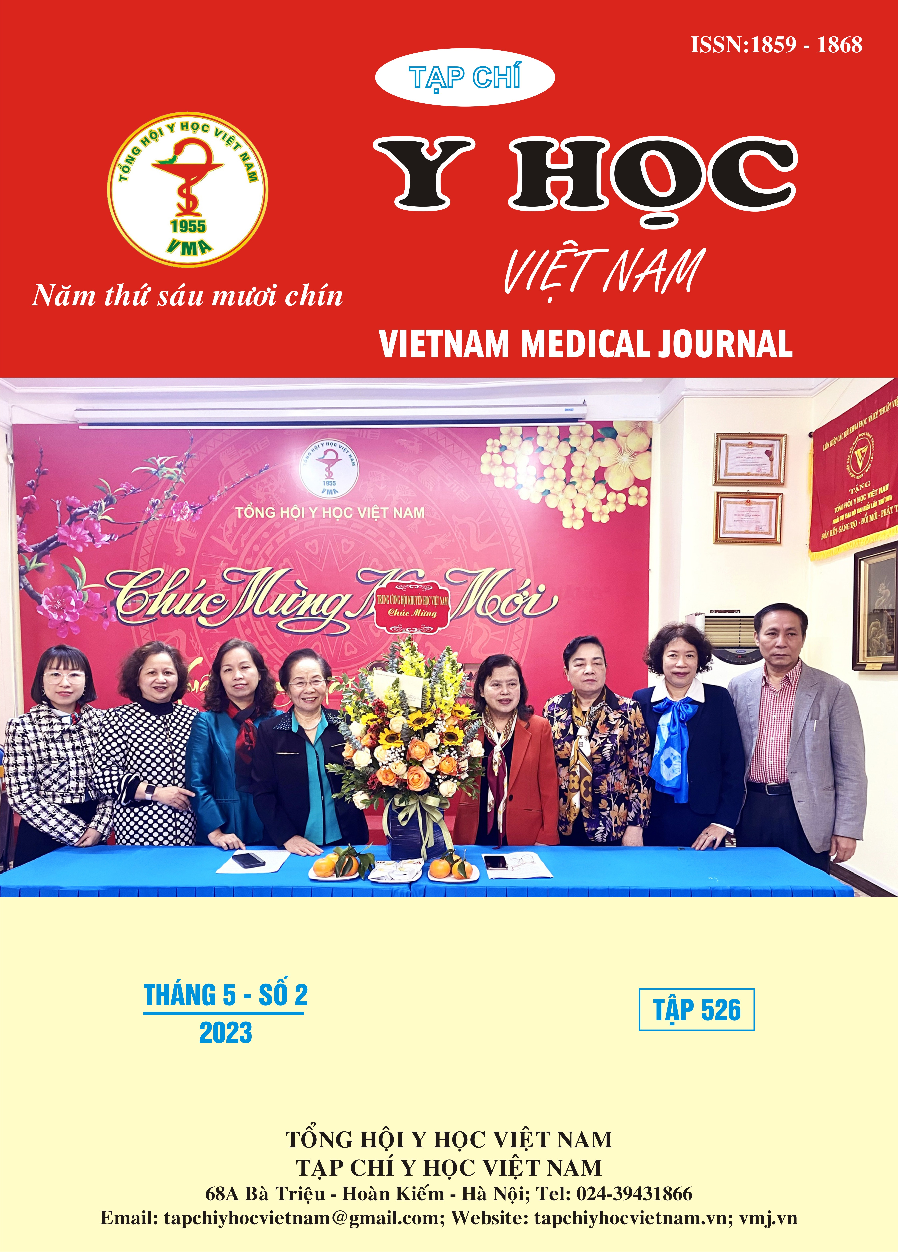COMPARISION OF TRANSRADIAL AND TRANSFEMORAL CHEMOEMBOLIZATION IN THE TREATMENT OF HEPATOCELLULAR CARCINOMA
Main Article Content
Abstract
Background: In recent years, transradial access (TRA) has emerged as a new approach for transcatheter arterial chemoembolization (TACE) in patients with hepatocellular carcinoma (HCC). Objectives: To determine procedure’s success rate and to compare the benefits and complications between transradial and transfemoral artery embolization for Hepatocellular Carcinoma. Methods: Cross-sectional study with a retrospective analysis. From January 2019 to August 2021, 197 transarterial embolization procedures were performed on 132 patients in Gia Dinh People’s Hospital. 96 of which were transfemoral and the other 97 other cases were transradial. Results: Sucess rate of transradial chemoembolization in HCC was similar to a transfemoral procedure, differences were not statistically significant (100% and 99%; p=0.497). Local vascular complication rate of radial access was lower than that of femoral access but was also statistically unsignificant (1% and 3.1%; p=0.368). Total procedure timing, irradiation time and radiation dose of a radial access were lower than that of a femoral access. But again, differences were not statistically significant. Conclusions: Transradial chemoembolization in HCC treatment has the same success rate, complication rate as well as technical characteristics as a transfemoral access procedure. With proven benefits and patient’s comfort, transradial access is feasible and can be applied in clinical practice of HCC chemoembolization.
Article Details
Keywords
Radial arteryl, chemoembolization, hepatocellular carcinoma
References
2. Nguyễn Đình Luân, Nguyễn Anh Dũng, Trần Minh Hiền. Thuyên tắc hóa dầu trong điều trị ung thư biểu mô tế bào gan giai đoạn trung gian kết quả sau 02 năm tại bệnh viện Nhân Dân Gia Định. Tạp chí Y Học TP Hồ Chí Minh. 2013;17(6):244-251.
3. Titano JJ, Biederman DM, Marinelli BS, et al. Safety and Feasibility of Transradial Access for Visceral Interventions in Patients with Thrombocytopenia. Cardiovasc Intervent Radiol. May 2016;39(5):676-682. doi:10.1007/s00270-015-1264-3
4. Phan Văn Trực. So sánh đường vào động mạch quay và động mạch đùi trong can thiệp động mạch vành. Đại học Y Dược Tp.HCM; 2008.
5. Shiozawa S, Tsuchiya A, Endo S, et al. Transradial approach for transcatheter arterial chemoembolization in patients with hepatocellular carcinoma: comparison with conventional transfemoral approach. J Clin Gastroenterol. Nov-Dec 2003;37(5):412-417. doi:10.1097/00004836-200311000-00013
6. Maucort-Boulch D, de Martel C, Franceschi S, Plummer M. Fraction and incidence of liver cancer attributable to hepatitis B and C viruses worldwide. Int J Cancer. Jun 15 2018;142(12):2471-2477. doi:10.1002/ijc.31280
7. Chen YY, Liu P, Wu YS, Lin H, Chen X. Transradial vs transfemoral access in patients with hepatic malignancy and undergoing hepatic interventions: A systematic review and meta-analysis. Medicine. 2018;97(52):e13926. doi:10.1097/MD.0000000000013926
8. Cao C, Kim SY, Kim GH, et al. Comparison of transradial and transfemoral access for transcatheter arterial embolization of iatrogenic renal hemorrhage. PLoS One. 2021; 16(8): e0256130. doi: 10.1371/ journal.pone.0256130
9. Du N, Yang MJ, Ma JQ, et al. Transradial access chemoembolization for hepatocellular carcinoma in comparation with transfemoral access. Transl Cancer Res. Sep 2019;8(5):1795-1805. doi:10.21037/tcr.2019.08.40
10. Kis B, Mills M, Hoffe SE. Hepatic radioembolization from transradial access: initial experience and comparison to transfemoral access. Diagn Interv Radiol. Sep-Oct 2016;22(5):444-449. doi:10.5152/dir.2016.15571
11. Wu T, Sun R, Huang Y, et al. Transradial arterial chemoembolization reduces complications and costs in patients with hepatocellular carcinoma. Indian J Cancer. Dec 2015;52(2): e107-e111. doi:10.4103/0019-509x.172505


